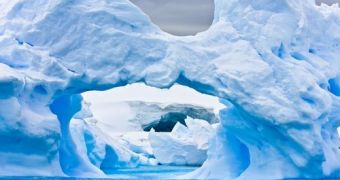Lake Vostok is home to at least 3,500 different species of single-celled and multicellular organisms, Dr. Scott Rogers at Bowling Green State University and researchers working closely with him maintain.
The scientists reached this conclusion after using DNA and RNA sequencing techniques to analyze the make-up of ice cores collected from Lake Vostok's basin about a year ago.
Dr. Scott Roger's and his colleagues' announcement that Lake Vostok is teeming with life contradicts commonly held assumptions that this lake is simply too inhospitable to be able to sustain any life forms.
Science News explains that, apart from being the fourth deepest lake on our planet, Lake Vostok is also the largest subglacial lake thus far documented in Antarctica.
The lake sits at the bottom of a glacier, whose weight generates tremendous pressure and pushes down on it.
Given the fact that Lake Vostok has spent the past 15 million years covered in ice, it should not come as a surprise that its nutrients content is extremely low.
Despite these harsh environmental conditions, bacteria and even multicellular organisms in Lake Vostok have managed to survive, and even thrive.
“We found much more complexity than anyone thought. It really shows the tenacity of life, and how organisms can survive in places where a couple dozen years ago we thought nothing could survive,” Dr. Scott Rogers said.
“The bounds on what is habitable and what is not are changing,” he added.
For the most part, Lake Vostok is populated by bacteria typically found in the digestive tract of fish, crustaceans and some worm species.
Fungi, psychrophiles (i.e. organisms that can survive in extreme cold) and thermophiles (i.e. organisms that prefer warm environments) appear to also inhabit this lake.
Since some of these species are freshwater ones and others are marine ones, the researchers suspect that their presence in this water source proves that Lake Vostok was at one point connected to the ocean.

 14 DAY TRIAL //
14 DAY TRIAL //